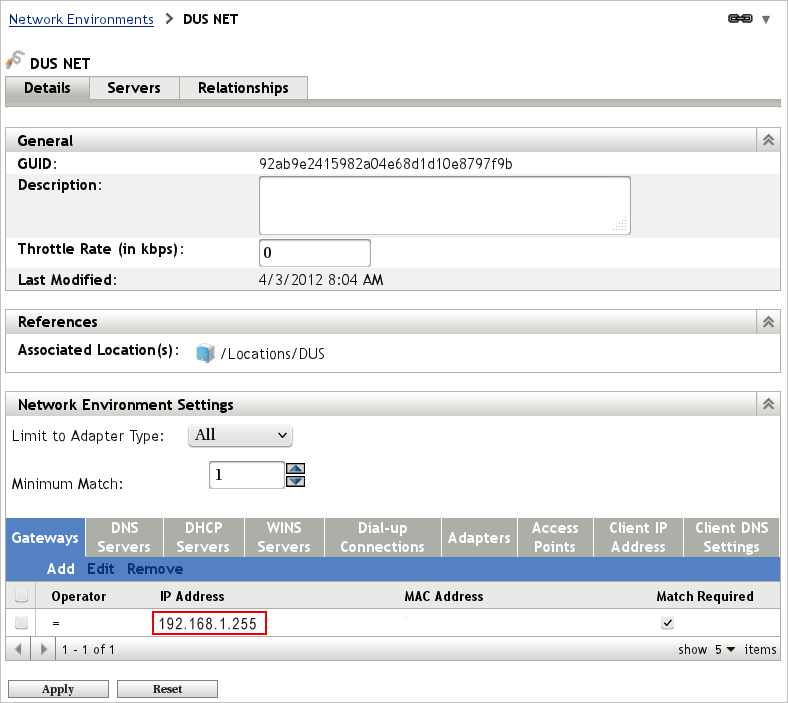10.6 Locations and Network Environments
Any client that registers to a ZCM Zone automatically apples to a certain location. If no location is defined, it will be assigned to the ~unknown~ location. Because locations define which Primary Servers are contacted by the client, it is important to know how locations and their associated network environments are configured in existing ZENworks Configuration Management setups.
The settings described in the following section are not of any interest in environments with only one ZENworks Configuration Management server.
10.6.1 Locations
The main purpose of a location is to define content, authentication, configuration, and collection servers that can be contacted by all clients of the associated network environment. Rules defined here need to ensure that clients always contact their closest servers from a LAN/WAN perspective and also guarantee high availability if servers defined here are temporarily not reachable. The menu for creating or editing locations is shown in the following figure:
Figure 10-8 Locations Tab
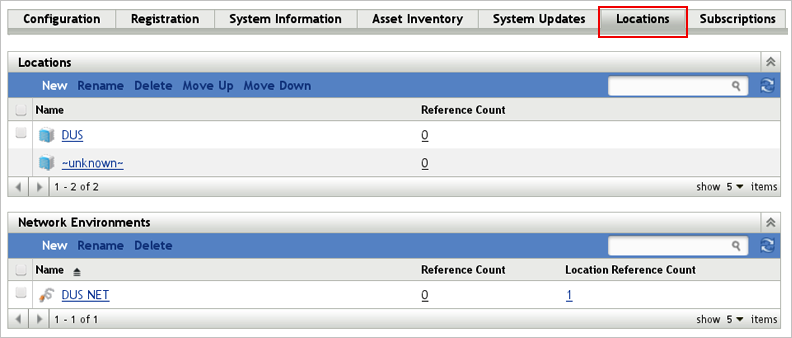
The Details tab displayed in the following figure shows the network environment assigned to the location DUS (DUS NET):
Figure 10-9 Details Tab
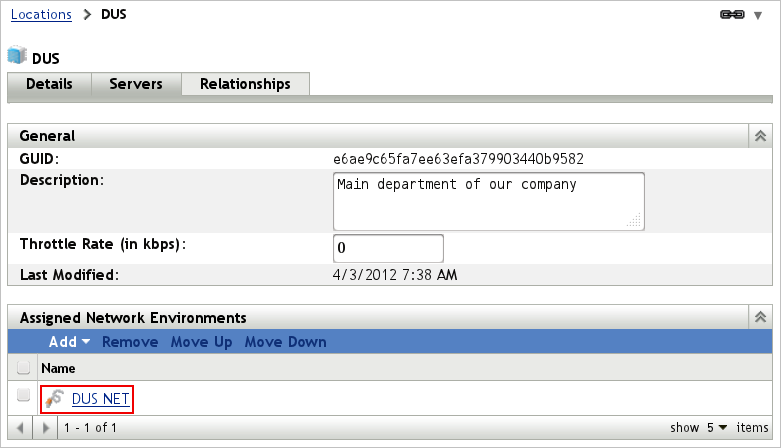
A location can consist of several physical subnets, so it is not unusual that a location has multiple network environments assigned. The Servers tab of the Location menu is intended to configure the servers or server groups associated to a location.
To avoid any uncontrolled device assignments, you should also exclude the Closest Server Default Rule from all location objects:
Figure 10-10 Servers Tab
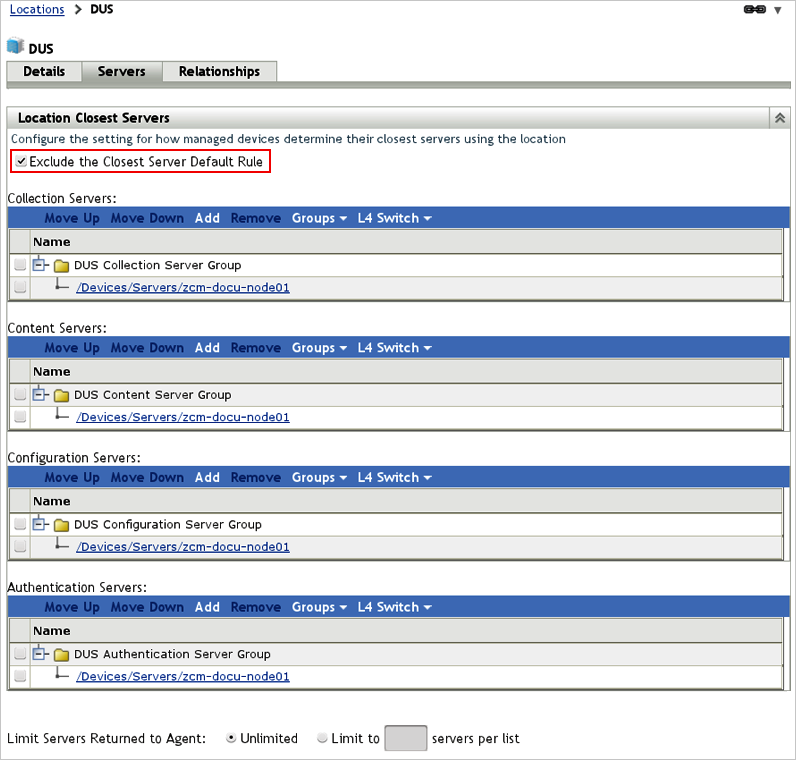
10.6.2 Network Environment
A device uses its current network environment to determine its configuration location. A network environment defines several properties such as DNS servers, DHCP servers, gateways, and subnets, as well as others that the agent uses to determine the location it belongs to.
Figure 10-11 Network Environment
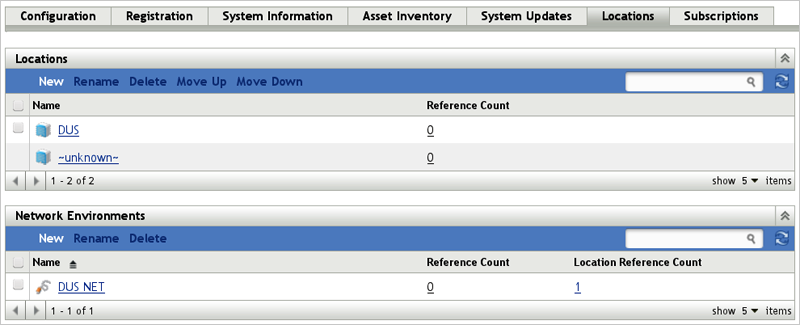
The following figure demonstrates how to set up the different properties that define a unique network environment. The configuration takes place at Configuration > Locations > Network Environments, where you can create a new network environment or edit an existing one.
In this example, clients identify their environment via the gateway and its IP address properties.
Figure 10-12 Network Environment - Details
